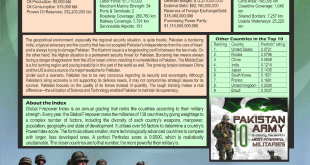Ethnicity is a socially defined category of people who identify with each other based on common ancestral, social, cultural or national experience. Ethnicity or social differentiation is one of the enormous social complexities faced by most contemporary societies.
Historically, ethnicity is the legacy of conquests that brought diverse people under the rule of a dominant group; of rulers who in their own interests imported people for their labour or their technical and business skills which intensified the ages-old pattern of migration for economic reasons; or of political and religious persecutions that drove people from their native lands.
Types of Ethnic Groups
Ethnic groups can be identified into following types:
1. Ethno-racial
This type of ethnic group emphasizes shared physical appearance based on genetic origins. For example, South Africa’s apartheid was based on ethno-racial aspects.
2. Etho-religious
It emphasizes shared affiliation with a particular religion; denominations and sect. For example, Zoroastrians, Jews, etc.
3. Ethno-linguistic
It emphasizes shared language, dialect and script. For example, three language groups living in Switzerland.
4. Ethno-national
It emphasizes a shared polity and sense of national identity. For example, Serbs, Croatians and Chechens.
5. Ethno-regional
It emphasizes a distinct local sense of belonging that stems from relative geographic isolation.
Approaches to Ethnicity
To understand the ethnic phenomenon, there is a need to look into its approaches or theories. According to sociological perspective, there are three theories or approaches of ethnicity:
1. The Primordial Approach
It states that ethnicity is something given, ascribed at birth, deriving from the kin-and-clan structure of human society.
2. The Epiphenomenon Approach
This approach divides the economic structure of society into two sectors: centre and periphery. The periphery consists of marginal jobs where products are not important to society; for example, agricultural work, but which offer little in the form of compensation as compared to the jobs in the centre. It’s in this peripheral labour sector that immigrants concentrate, develop their own solidarity and maintain their culture. Ethnicity, thus, is something created and maintained by an uneven economy or a product of economic exploitation.
3. The Instrumentalist Approach
This approach is based on rational choice theory. According to this approach, ethnicity is something which may be relevant in some situations but not in others. Individuals may choose to be regarded as members of an ethnic group if they find it to their advantage.
Ethnic Conflict
Ethnic conflict is an episode of sustained violence in which national, ethnic and religious or other communal minorities challenge governments to seek major changes in status. The Yugoslav Wars, the First Chechen War, the Kurdish issue and the Nagorno-Karabakh War, all are the issues of sectarian confrontation at international level.
Causes of Ethnic Conflict in Pakistan
 Since its inception, Pakistan has been repeatedly challenged by various groups on the basis of nationalism, regional separatism, religious doctrine and political ideology. This instability has been mirrored in domestic politics where pluralistic and accommodationist traditions have been regularly undermined by inept leadership or interrupted by periods of authoritarian rule. Following are the causes behind ethnic polarization in a multi-ethnic state:
Since its inception, Pakistan has been repeatedly challenged by various groups on the basis of nationalism, regional separatism, religious doctrine and political ideology. This instability has been mirrored in domestic politics where pluralistic and accommodationist traditions have been regularly undermined by inept leadership or interrupted by periods of authoritarian rule. Following are the causes behind ethnic polarization in a multi-ethnic state:
(a) Economic Disparities
In heterogeneous societies, economic disparities augment ethnic identities. The minority groups feel threatened by the dominant group in terms of culture and ethnic cleavages. This perception aggravates in the absence of socioeconomic equality. This inequality leads towards secessionist discourse. In the past, dismemberment of Pakistan happened mainly due to socioeconomic differences between the peoples of both wings of the country.
(b) Competition for Scarce Resources
Discrimination in terms of development and sharing of resources among ethnic groups creates disequilibrium in a society. As a result ethnic strife emerges which becomes the cause of violence and erosion of security. For instance, in Karachi, five ethnic communities are competing for resources, leading to ethnic cleansing and sectarian killings. Moreover, it mobilizes an ethnic community to raise voice for separatist privileges such as people in Balochistan, deprived masses in Southern Punjab and Interior Sindh, etc.
(c) Historical and Cultural Factors
Historical and cultural factors are very significant with regard to ethnic conflicts, especially in the context of third world countries that are heterogeneous in nature. Ethnicity is also commonly tied to territory. Sometimes alterations in territorial boundaries can lead to identity questions. For instance, Colonial powers exploited caste, racial, linguistic and religious differences among indigenous peoples of African and Asian countries to perpetuate their rule.
(d) Demographic Changes
Ethnic cleavages emerge not only due to socioeconomic inequalities but also due to demographic changes. Inter-provincial and intra-provincial migration creates problems of assimilation or acculturation thus contributing to ethnic fragmentation.
(e) Politicization of Ethnicity
Ethnic groups feel politically alienated when they don’t get equal representation in state structure or decision-making apparatus of a state. Then, in this situation, they become indifferent to state policies and tend to identify themselves on the basis of their respective regions.
Solutions
- Pluralistic traditions should be followed which include accomodationist and tolerant political culture, capable of accommodating dissenting voices.
- All ethnic minorities should be included in mainstream politics and should be made a part of decision-making processes.
- To avoid separatist impulses, equal distribution of resources among all ethnic groups should be ensured.
- Holistic solutions are needed to resolve the issue of provincial autonomy. This can be done through constitutional amendments.
- Re-drawing of provincial boundaries on lingual basis can also be a viable option.
 Jahangir's World Times First Comprehensive Magazine for students/teachers of competitive exams and general readers as well.
Jahangir's World Times First Comprehensive Magazine for students/teachers of competitive exams and general readers as well.



